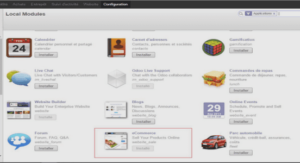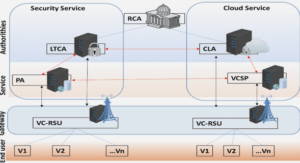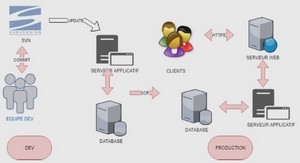Small cells in Long Term Evolution-Advanced (LTE-A) networks include several types such as Pico eNBs, Remote Radio Heads (RRHs), in-band Fixed Relay Nodes (FRNs), Mobile Relay Nodes (MRNs), and Femtocells. Extending the service coverage within macro-cells was the prime objective behind designing small cells; however, they can be densely deployed to increase the capacity of the wireless network significantly (Damnjanovic et al., 2011). Therefore, future networks may adopt the technology of small cells to support ever-increasing data demand.
On one hand, nowadays, vehicular users, especially transportation passengers, e.g., trains, trams, or buses, represent most wireless internet users. Their number is predicted to increase due to the wide use of smartphones, portable tablets, and laptops. Thus, public transportation Vehicles will be a data-intensive wireless hotspot. The signals transmitted from the eNB directly to the Vehicular User Equipment (VUE) inside the vehicles are highly attenuated by the Vehicular Penetration Loss (VPL). Thus, more radio frequency power will be transmitted to defeat the VPL and therefore assure an acceptable level of Quality of Service (QoS). Since VUEs will be a great number of broadband subscribers in the near future, it is important to design a new wireless system that guarantees a certain level of QoS with a cost-efficient operation for those VUEs.
In the literature, many solutions have been introduced to serve the VUEs. However, dedicated MRNs deployment might be one of the most effective ways to serve VUEs. MRNs are deployed on top of public transportation vehicles to serve the VUEs . This new technology still needs further study. MRNs are considered as low power nodes that connect to the eNBs via the radio interface. MRNs are surely able to mitigate the Impact of the VPL. Besides, MRN can employ several smart antenna techniques, and advanced signal processing schemes to improve system performance.
Furthermore, MRNs can reuse the FRN physical layer interfaces standardized in the 3rd Generation Partnership Project (3GPP) LTE release 10. An MRN can have its own cell and handle all the layer-2 and layer-3 communication protocols, and thus appears as a regular base station to the VUEs aboard a public transportation vehicle. Multi-RAT functionalities, i.e., LTE, Wi-Fi, GPRS, etc., may be supported by MRN as the access link to VUEs. Moreover, a group of VUEs that are served by the same MRN can be handed over as it is a super-user group. Thereby, the Group Handover helps in reducing the handover failure probabilities. In our thesis, we are going to investigate some techniques that can enhance the VUEs’ QoS and performance.
Relay-enhanced LTE is a many-to-one association between Relay Nodes (RNs) and eNB (i.e., several relay nodes can be connected to one eNB but an RN is connected only to one eNB), (Teyeb et al., 2009). Though that is a simple solution to enable relaying in LTE, the end-toend performance of relayed UEs will be constrained by the capacity available on the backbone link that is accessible through the S1 interface. Radio resources might be enough at the relay link but congestion in the backbone (i.e., on the S1 link) can degrade the performance of relayed UEs. Nevertheless, we may have unfavourable conditions or insufficient radio resources on the relay link (i.e., Un link) with the DeNB despite there are lightly loaded neighbouring cells. Hence, many-to-many connections between RNs and eNBs through the 𝑈𝑛 interface are introduced to use the sum of the available capacity in all the neighbouring cells.
User association is when the user or relay node (in our case) is assigned to different stations in the system. Conventionally, users or relay nodes are assigned to only one eNB at a time. It is proved that the achievable throughput of any terminal depends on the users-eNBs assignment decisions. In this thesis, for a distributed relaying system, a user association method that increases the number of users admitted in the system will be developed (i.e. minimizing blocking). In addition, with the mobility of the relays considered, the handover failure rate will greatly be minimized. Specifically, this work focuses on the first critical problem aforementioned that considerably determines the possibility of admitting a call in the network (Macro cell) without affecting the quality of service required by the call context. A call is rejected if the above condition is not satisfied. The admission control (AC) establishes the rules of acceptance of different call types (new or handover) in the network to ensure a very low block rate and an optimal call acceptance. The challenges in the user association are to minimize the number of blocked VUEs in the network when the network resources are scarce and enhance the QoE of VUEs.
On the other hand, the deployment of residential and non-residential small cells is growing rapidly (Bian et al., 2014). This deployment can be planned or unplanned deployment according to the service operator’s policy (Qualcomm, 2019). Unlike a macro network, the low cost of small cells encourages subscribers to install their small cells without any network planning and site-specific system configuration settings. Hence, a significant number of small cells in the network will be randomly distributed.
Mobility of UEs in a small cell network with low service area cells may cause load-imbalance across the cells in the network. The performance of the network in terms of capacity and handover success rate degrades as a result of such an unbalanced load. The shortage of resources in the overloaded small cells leads to poor QoS and increases the handover failure rate when UEs intend to enter those cells though they have lightly loaded neighbouring cells. Consequently, resources of the unloaded cells remain under-utilized though some overloaded neighbouring cells cannot meet the QoS requirements. Thus, the network needs proper configuration and management mechanisms such that the QoS is improved.
System parameters are adjusted manually in the existing networks to reach high levels of operational performance. However, such manual tuning is becoming difficult with the fast evolution of networks. Self-organized network (SON) was introduced to configure, optimize, and heal itself automatically in LTE, and hence decrease the operational complexity (3GPP, 2014.). SON algorithms are categorized into three classes: centralized, distributed, and hybrid. SON has several components such as mobility load balancing (MLB), frequent handover mitigation (FHM), mobility robustness optimization (MRO), and interference management (IM), that help small cells to deliver carrier-grade performance. MLB distributes the UEs load among small cells to enhance the QoS and to increase system capacity. MLB utilizes cells load information to optimize the cell boundaries to offload UEs. SON uses mobility/handover parameters for load balancing (3GPP, 2011; Feng et al., 2008).
MLB distributes the load among the small cells by adjusting the mobility parameters (i.e., handover parameters) according to their load statuses. To shift the candidate UEs, the cell individual offsets (CIO) of the serving and neighbouring cells are adjusted by UEs based on the reported measurements. However, improper handover decisions and offloading sequence for overloaded cells in MLB might cause an inefficient usage of resources or degrade the service. The performance metrics that define the QoS required by an application or the network are as following:
• Throughput: the number of packets received per time unit represents the throughput which might be normalized by dividing the receiving packet rate over the sending packet rate.
The objective is to improve the throughput for UEs served by an MRN or a fixed small cell.
• Packet Loss rate: this can be defined as the percentage of the packets that are lost in the network due to congestion, or link failure. The objective is to minimize the Packet Loss rate.
• Delay: two types of delay are defined in any network: the end-to-end delay and the handover delay. The key objective is to minimize the delay as much as possible.
• Blocking probability: it is defined as the probability that some UEs cannot achieve the minimum required data rate in the network. The objective is to minimize the blocking probability as much as possible.
• Standard deviation: The range of Standard deviation is in the interval [0, 1], with a lower value representing a highly balanced load distribution amongst all active small cells. Therefore, minimizing is one of the objectives to achieve a highly balanced load in small cell networks.
• The number of handovers: Mobile UEs may experience regular or forced handovers among small cells based on their speed and session durations and the load balancing method adopted. Frequent or redundant handovers cause packet losses and delays and consequently leads to a poor UE’s QoE. The objective is to minimize the number of handovers as much as possible when realizing a balanced-load network.
Related Work on Resource and Mobility Management
Mobility Management
The main objective of mobility management in 5G small cell Networks is to assure the continuity of the service during the handover process. Handover is the most sensitive point in the convergence of any two adjacent cells. This transition is assumed homogeneous and transparent to UEs, which implies that the mobile UE must be auto-configured with the new settings without user intervention.
One of the challenges that limits the performance and reliability of small cells system is the handover during high-speed movement. In other words, passing multiple cells within several seconds requests a massive number of handovers. Before initiating those handover procedures, the UE has to perform cell measurement and report, Radio Resource Connection (RRC) reconfiguration random access as soon as it enters a crossed cell. Thus, it was proposed that the users boarding a high-speed vehicle are handed over as a whole group. Therefore, system performance is enhanced in terms of mobility and resource management (Li et al., 2012; Luo et al., 2012).
A novel technique to avoid handover problems in LTE has been proposed by authors in (Zhang et al., 2014), which is based on collaboration among macro-femtocells grouped according to nearby base stations. Each group pre-fetches higher layer packets to reduce the latency in handover process.
Another study (Zhao et al., 2011) introduced a new handover algorithm for mobile relay stations to improve the handover success rate. The algorithm is based on the relative speeds of the UEs to the serving DeNB and the target DeNB.
INTRODUCTION |





